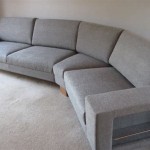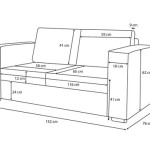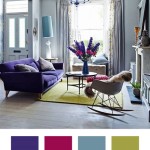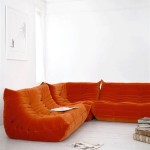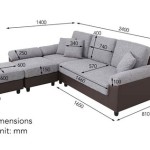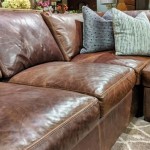```html
Japanese Sofa Beds: Exploring Multifunctional Living
The concept of a Japanese sofa bed represents a fusion of minimalist design, space-saving functionality, and traditional comfort. These versatile pieces of furniture address the needs of modern living, particularly in environments where space is at a premium. While a direct translation of "sofa bed" exists in Japanese, understanding the nuances of the different terms used to describe these items provides a deeper insight into their construction, purpose, and cultural significance.
Rather than relying on a single, overarching word, the Japanese language employs several terms to describe various types of sofa beds, each reflecting specific design characteristics or functional aspects. The most common terms include derivations from English loanwords, combined with native Japanese vocabulary to accurately convey the essence of the furniture.
Common Terminology and Their Meanings
The most frequently used term for a sofa bed in Japanese is “ソファーベッド” (sofa-beddo). This is a direct transliteration of the English term "sofa bed" into Japanese using the katakana script, which is primarily used for foreign loanwords. This term is widely understood and accepted, representing the general concept of a piece of furniture that serves as both a sofa and a bed.
Another term you might encounter is "ソファ兼用ベッド" (sofa kenyō beddo). This phrase translates more directly as "sofa-bed combination." The word "兼用" (kenyō) signifies "combined" or "dual-purpose." This term emphasizes the dual functionality of the item, highlighting its capability to serve as both a seating area and a sleeping surface. While “ソファーベッド” is more commonly used, “ソファ兼用ベッド” offers a more descriptive and literal explanation of the furniture’s function.
While not strictly a "sofa bed," the word "デイベッド" (dei-beddo), also a katakana term borrowed from English, refers to a daybed. Daybeds are similar in concept to sofa beds; they can be used for lounging and sitting during the day and converted for sleeping at night. The difference often lies in the design; daybeds may have a more open, less "sofa-like" appearance than traditional sofa beds. Therefore, depending on the design and intended use, "デイベッド" might sometimes be used to describe a specific type of Japanese sofa bed.
Design Characteristics and Materials
Japanese sofa beds often exhibit design principles rooted in minimalism and functionality. Clean lines, simple forms, and muted color palettes are common. The focus is on maximizing space efficiency and creating a versatile piece of furniture that seamlessly integrates into various living spaces. This aesthetic aligns with the broader principles of Japanese interior design, which emphasizes harmony, simplicity, and connection to nature.
The materials used in Japanese sofa beds often reflect a commitment to quality and durability. Solid wood frames, often made from lightweight but sturdy woods like cedar or birch, provide structural support. Upholstery materials frequently include natural fabrics like cotton, linen, or hemp, chosen for their breathability and comfort. High-density foam and other supportive fillings ensure a comfortable seating and sleeping experience.
Foldable designs are prevalent, allowing for easy conversion between sofa and bed configurations. Some models utilize a simple fold-out mechanism, while others incorporate more complex unfolding or sliding mechanisms. Futon-style sofa beds are also common, featuring a traditional Japanese futon mattress that can be folded and stored when not in use. These types are particularly suitable for smaller spaces due to their compact and lightweight nature.
The design often prioritizes storage as well. Many Japanese sofa beds include built-in storage compartments beneath the seating area, providing a practical solution for storing bedding, pillows, or other household items. This feature is particularly valuable in smaller apartments and homes where optimizing space is essential.
Cultural Context and Functionality
The prevalence of sofa beds in Japan is closely tied to the country's unique living conditions. High population density and limited space are common factors driving demand for multifunctional furniture. Sofa beds provide a practical solution for maximizing the use of available space, serving as both seating and sleeping areas in a single piece of furniture. This is particularly relevant in urban areas where apartments are typically smaller.
The Japanese emphasis on hospitality also contributes to the popularity of sofa beds. It is customary to offer guests a comfortable place to sleep, even in smaller homes. Sofa beds provide a convenient and space-efficient way to accommodate overnight guests without requiring a dedicated guest room. This aligns with the cultural values of consideration and attentiveness to the needs of others.
Beyond their functional benefits, Japanese sofa beds often reflect a connection to traditional Japanese design. The use of natural materials, minimalist aesthetics, and foldable designs evokes the principles of traditional Japanese furniture and architecture. This creates a sense of harmony and balance in the living space, contributing to a more comfortable and relaxing environment.
The selection of a Japanese sofa bed depends on individual needs and preferences. Factors to consider include the available space, the desired level of comfort, the frequency of use, and the overall aesthetic of the room. It’s important to assess the fold-out mechanism to ensure it is easy to operate and durable enough for regular use. Furthermore, evaluating the quality of the materials and the overall construction is crucial to ensure longevity and satisfaction.
In modern Japanese homes, the sofa bed serves not only as a space-saving solution but also as a symbol of adaptability and resourcefulness. Its ability to transform from a comfortable seating area to a relaxing sleeping space embodies the Japanese appreciation for efficient design and versatile functionality. By understanding the nuances of the terminology used to describe these items, consumers can gain a deeper appreciation for their cultural significance and practical benefits.
```
Japanese Style Futons Sofa Beds Natural Bed Company

Japanese Style Futons Sofa Beds Natural Bed Company

The Absolute Best Bed A Japanese Futon Wirecutter

Ika Japanese Fabric Sofa Bed Urban Mood
Japanese Style Futons Sofa Beds Natural Bed Company

What Is A Futon Eluxury

Futon Wikipedia
Convertible Sofa Bed Sleeper Studio Couch Wordreference Forums

Japanese Bedding Futon The Home Archi Designer Japan

Ika Japanese Fabric Sofa Bed Urban Mood

